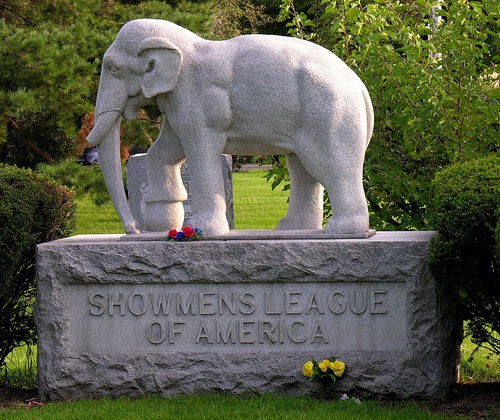In the world of the Big Top, the term “First of May” describes a new employee’s first season, with the circus.
There’s an oft-repeated but mistaken notion, that the circus goes back to Roman antiquity. The panem et circenses, “bread and circuses” of Juvenal (circa A.D. 100), refers more to the ancient precursor of the modern racetrack, than to the modern circus. The only common denominator is the word itself, as the Latin root ‘circus’, translates into English, as “circle”.

The father of the modern circus is the British Sergeant-Major turned showman, Philip Astley. A talented horseman, Astley opened a riding school near the River Thames in 1768, where he taught in the morning and performed ‘feats of horsemanship’ in the afternoon.
Astley’s afternoon shows gained overwhelming popularity by 1770, when he hired acrobats, rope-dancers and jugglers to fill the spaces between equestrian events. The modern circus, was born.
Equestrian and trick riding shows were gaining popularity all over Europe at this time, performers riding in circles to keep their balance while standing on the backs of galloping horses. It didn’t hurt matters, that the “ring” made it easier for spectators to view the event.
The unique character of the American traveling circus emerged in 1835, when 135 such farmers and menagerie owners combined with three affiliated circuses to form the American Zoological Institute.
Phineas Taylor Barnum and William Cameron Coup launched P.T. Barnum’s Museum, Menagerie & Circus in 1871, where the “museum” part was a separate exhibition of human and animal oddities. It wouldn’t be long, before the ‘sideshow” became a standard feature of the American circus.
There have been no fewer than 81 major circuses in American history, and countless smaller ones. ‘The Greatest Show on Earth’ broke down its tent for the last time in 2017, when the Ringling Brothers Barnum & Bailey Circus ended a 146-year run. There was a time though, when the circus really WAS, the greatest show on earth.

The American war machine was spinning up to peak operational capacity in 1918, as the industrial might of the nation pursued the end to the war ‘over there’.
At 3:56 on the morning of June 22, 1918, an engineer with the Michigan Central Railroad was at the controls of an empty 21-car troop train. Automatic signals and flares should have warned him that there was a stalled train on the track ahead. A frantic flag man tried and failed to get him to stop. Alonzo Sargent had been fired before, for sleeping on the job. Tonight, Sargent was once again, asleep at the wheel.
The Hagenbeck-Wallace circus was a big deal in those days. The famous lion tamer Clyde Beatty was a member, as was a young Red Skelton, on this night tagging along with his father, who worked as a clown.
The 26-car Hagenbeck-Wallace circus train was enroute from Hammond Indiana to Monroe Wisconsin, when an overheated axle box required an unscheduled stop.
Most of the 400 circus employees were asleep at that early hour, in one of four rear sleeping cars.
The Michigan Central locomotive smashed into the rear of the stalled train at 60mph. Strong men, bareback riders, trapeze performers and acrobats were killed instantly. Others were horribly maimed, as wooden sleeping cars telescoped into one another. Confused and bleeding survivors struggled to emerge from the wreckage as gas-fed lanterns began to set all that wood on fire.

127 were injured and an estimated 86 crushed or burned to death in the wreck. The saddest thing you could ever imagine was the sight of a clown, his name was Joe Coyle, weeping inconsolably beside the dead and mangled bodies of his wife and two children.
The rumor mill went berserk. Wild lions and tigers had escaped and were roaming the streets and back yards of Gary, Indiana. Elephants died in the heroic attempt to put out the flames, spraying water on the burning wreckage with their trunks. None of the stories were true. The animals had passed through hours before on one of two additional trains, and now awaited a train that would never come.

The Showmen’s League of America was formed in 1913, with Buffalo Bill Cody its first President. The group purchased a 750-plot parcel at the Woodlawn Cemetery in Forest Park, Illinois only a year earlier, calling it “Showmen’s Rest”. They had no idea their investment would be used so soon.
Only thirteen of the dead were ever identified. A mass grave was dug for the unidentified and unidentifiable. Most of the dead were roustabouts or temporary workers, hired just recently and known only by nicknames. Then there were the performers known only by stage names, their gravestones inscribed with names like “Baldy,” “4-Horse Driver”, “Smiley,” and “Unknown Female #43.
Only one show had to be canceled, as erstwhile ‘competitors’ Barnum & Bailey, Ringling brothers and others lent workers, performers and equipment. The show would go on.
Today, the International Circus Hall of Fame is located in the former Hagenbeck-Wallace Circus winter headquarters in Peru, Indiana.
In the elephant world, an upraised trunk symbolizes joy. Five elephant statues circumscribe the Showmen’s Rest section of Woodlawn cemetery. Each has a foot raised with a ball underneath. Their trunks hang low, a symbol of mourning. The largest of the five bears the inscription, “Showmen’s League of America.” On the other four are inscribed the words: “Showmen’s Rest”.




Reblogged this on Dave Loves History.
LikeLiked by 1 person
Amazing blog 😀😀
LikeLiked by 1 person
Thank you so much.
LikeLike